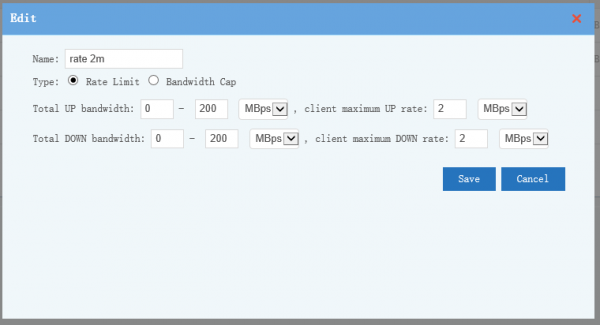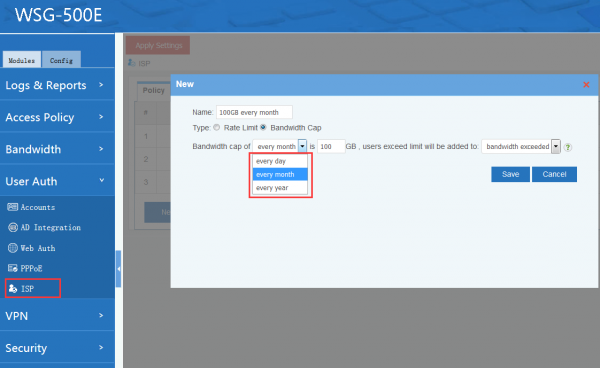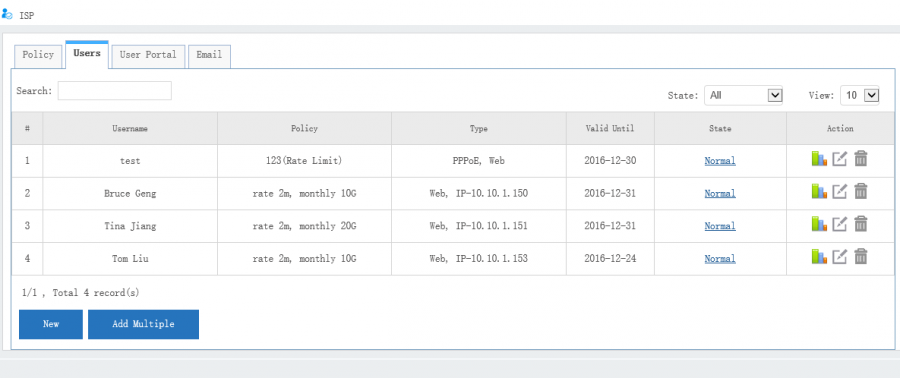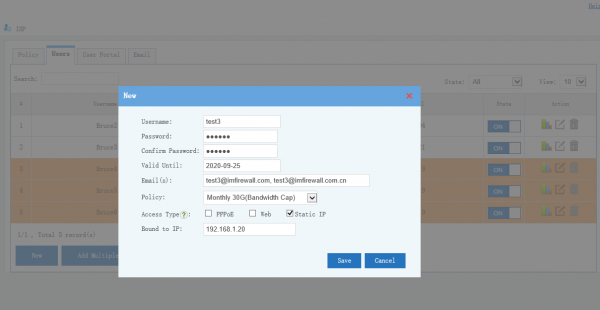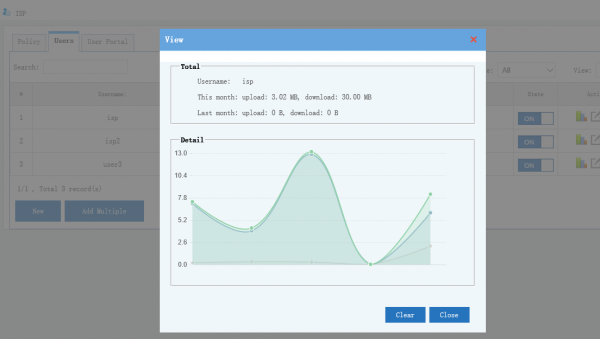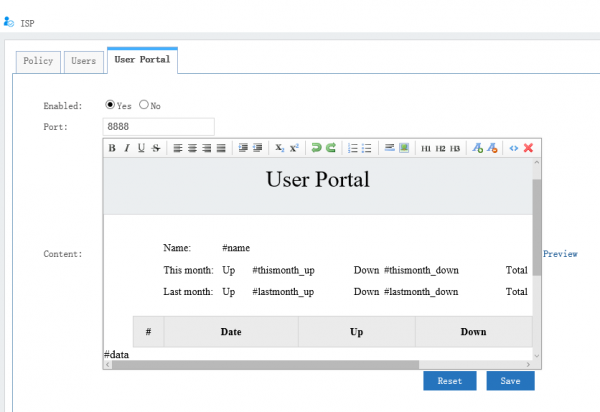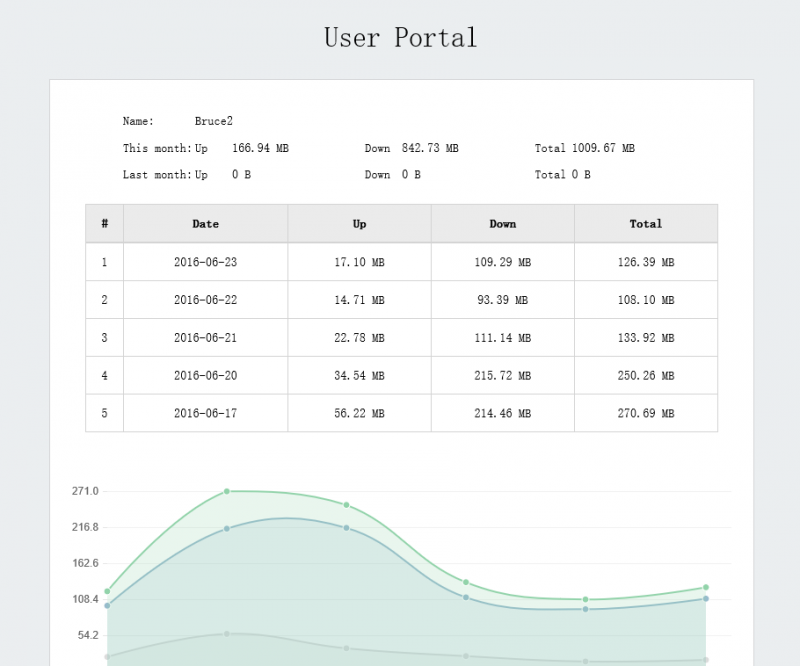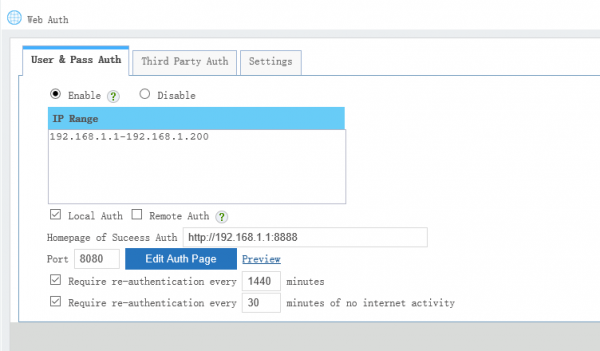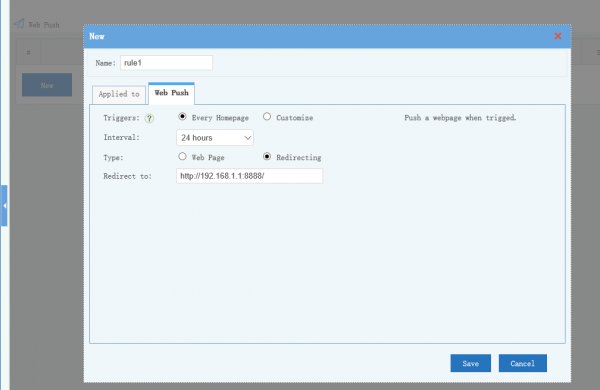ISP
(→Settings) |
(→Authentication) |
||
| Line 53: | Line 53: | ||
== Authentication == | == Authentication == | ||
| − | Supports "[[pppoe|PPPoE]]" | + | Supports "[[pppoe|PPPoE]]", "[[webauth|Web Auth]]" and "Static IP" authentication. For "Static IP", usernames will be bound to ip addresses, no authentication is required. |
== Clients Notify == | == Clients Notify == | ||
Revision as of 16:03, 23 September 2016
Contents |
1 ISP Management
"ISP Management" provides an integrated solution for ISP management, including below features:
- Policy management: manage ISP bandwidth policies, support "rate limiting" and "weekly/monthly bandwidth cap".
- User management: add/edit/delete client users, query users bandwidth statistics.
- User portal: a portal for client users to check bandwidth statistics.
- Supports "PPPoE" and "Web Auth authentication.
- Supports "Web Push" to send alerts and statistics to clients.
2 Settings
2.1 Policy
Defines ISP policies, two policy types are supported: "Bandwidth Cap"(monthly) and "Rate Limit".
"Rate Limit Policy Settings":
"Bandwidth Cap" users who exceed bandwidth cap will be added to virtual groups automatically. So policies of the certain group will be applied. For example, you can set a slow bandwidth rate, restricted internet access and frequent notify for whom exceeded the limit.
Policy List:
2.2 Users
You can add, modify, disable users, and check users statistics.
2.3 User Portal
The portal can be accessed by client users. You can set automatic URL redirect on success "web auth", or setup "Web Push" to push the portal URL.
User Portal Settings
Portal page from the users side.(You may customize it as you want):
3 Authentication
Supports "PPPoE", "Web Auth" and "Static IP" authentication. For "Static IP", usernames will be bound to ip addresses, no authentication is required.
4 Clients Notify
You can redirect "Web Auth" users to the "user portal" URL on successful web auth. However, PPPoE users do not allow URL redirecting. So for PPPoE users, you need to setup "Web Push" rules to push the "user portal URL".
"Web Auth" settings:
"Web Push" settings:
